Transcendental aesthetics
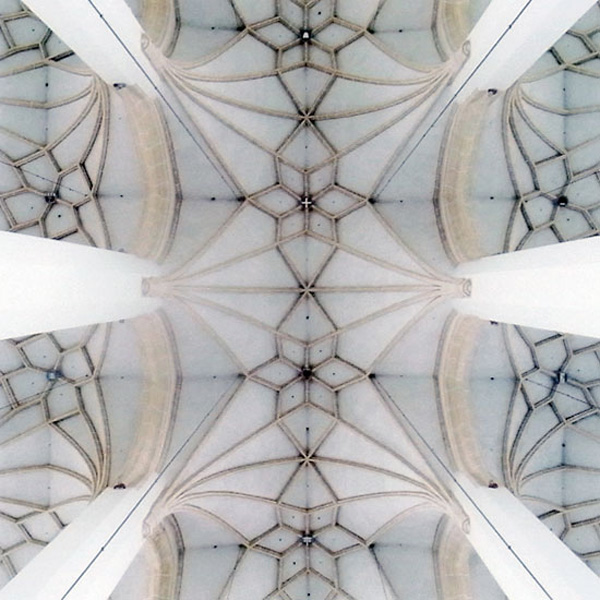
Awhile back, the website Science and Religion Today asked me to write a short piece on the topic of aesthetics of places of worship, and I thought about some of the ideas in that piece when I saw these amazing images of vaulted ceilings from the book Heavenly Vaults, by David Stephenson. I realized I never posted the piece in full here, so I thought I share these ideas from the archives:
People seek many different things in a spiritual experience, a fact attested to by the variety of religions and rituals practiced around the world today. But if there’s one motivation that all faiths seem to share, it’s a desire for transcendence — a wish to rise above mundane concerns and commune with a higher or more complete entity. When we worship, we look to shift our perspective away from the trivial towards the big picture, to put ourselves in context of a larger whole. Can design help us do this?
In short, yes. Design won’t make believers out of atheists, but it can certainly provide conditions for deepening the experience for the spiritually inclined. Researchers studying awe, an emotional state closely linked to transcendence, believe that a key trigger is a sense of vastness. Encountering objects or spaces that are extremely large in scale, from Ayer’s Rock to the Grand Canyon, stimulates what psychologists call a need for accommodation — a need to take this new experience and fit it into our existing mental models, stretching them in the process. As our mental models struggle to accommodate the power behind works of great scale (both natural and manmade), we feel smaller by comparison. Our focus broadens, which effectively minimizes our daily preoccupations. The builders of the great cathedrals, the Angkor temples in Cambodia, and Easter Island’s famous moai statues all understood, whether explicitly or intuitively, the power of great scale to inspire this perspective-shifting, spiritual sense of awe.
Scale can be particularly effective when the exaggerated dimension is height. Earthly existence naturally has a vertical orientation, defined by the gravitational force that holds us to the earth. Upward directionality is associated with lightness, air, and spiritual thoughts, while downward brings connotations of heaviness, earth, and physicality. Some religions conceptualize this vertical dichotomy as a moral one, with heaven above earth and hell below it. And many religions conceive of the spirit as a weightless entity, which is freed upon death from its gravity-bound body. Defying this downward pressure by turning our gaze upwards naturally leads many of us to a more spiritual frame of mind. Structures that are upwardly expansive feel more conducive to worship than those with low, dark ceilings. This effect can be enhanced by adorning the ceiling with elements that cause the gaze to drift upward, such as lighting fixtures, ceiling frescos, or skylights.
Turning the gaze upwards has another effect: it allows more light into the eye, and light is another aesthetic element that can enhance our spiritual experience. Light is a common metaphor for deities and a proxy for their blessing. In Genesis, God’s first act after creating heaven and earth is to proclaim “Let there be light.” When a religion wins a convert, they say he has “seen the light,” and the object of spiritual quests is “enlightenment.” Many early religions, such as those of ancient Egypt and Greece, featured gods of light or sun as primary deities. It makes sense that light would be so prominent a feature in worship, considering its significance to our survival. Light was certainly on the minds of gothic cathedral builders when they developed the practice of using flying buttresses. By taking pressure off of the walls, these exterior structures allowed for taller, lighter cathedrals with vast expanses of glass windows that were previously impossible. Structures of worship are at their most sublime not just when they’re bright, but when they call attention to the light and focus our gaze on it. Stained glass windows are one way architects of religious structures have done this. Others work with natural light. A particularly beautiful example is Osaka’s Church of Light, designed by Tadao Ando. The cuts in the expansive structure shape the light, giving it form and presence. The result is an expansive space with a transcendent glow.
Surely there are other aesthetics more specific to different religions that can enhance the experience of prayer and spiritual contemplation. Features such as the structure’s shape, color treatments, and level of adornment all vary according to belief systems. But these three elements — scale, height, and light — seem to have deep roots in human nature or cultural practice that make them particularly conducive to achieving spiritual communion. Can you pray meaningfully in a dimly lit, undergound cave? Surely the answer is yes. But an expansive, well-lit space is more likely to put you in a prayerful mood.
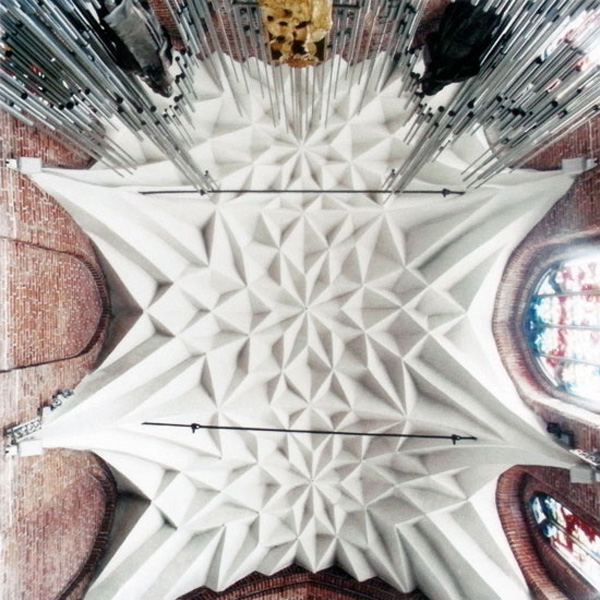
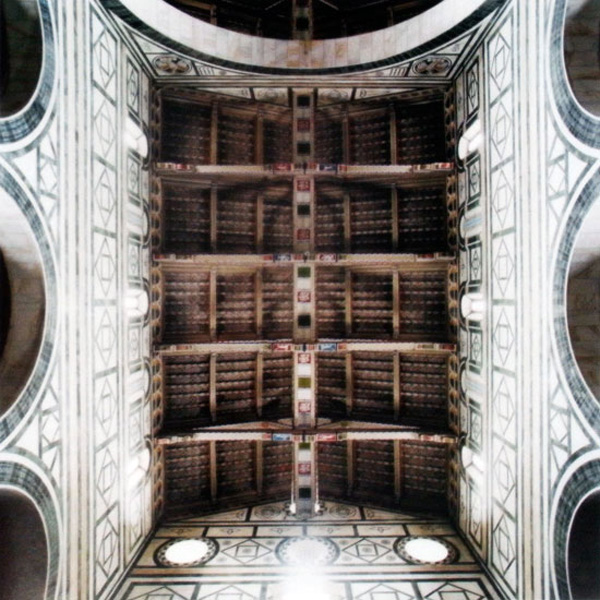

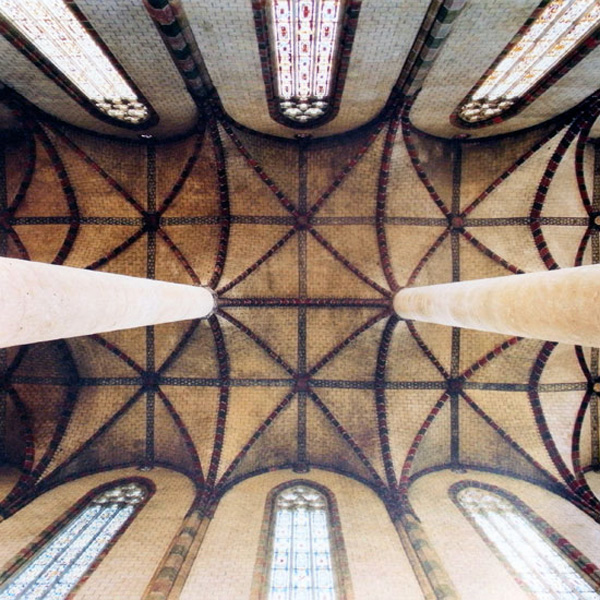
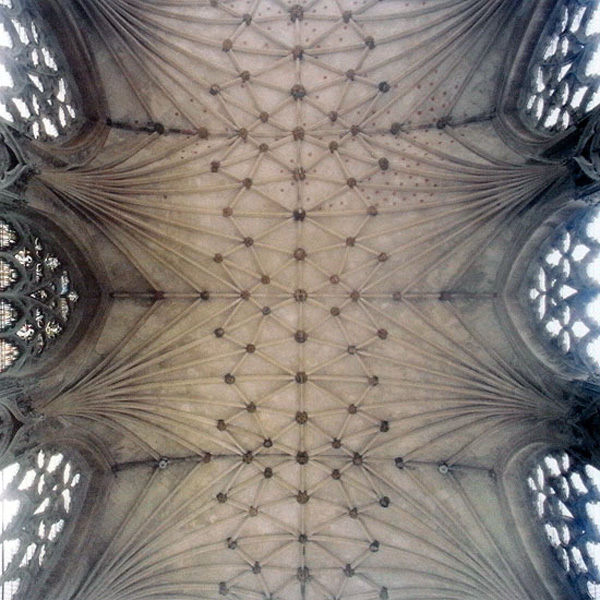



Images: DesignBoom
{via}




Discussion (6 Comments)
Well, you’ve touched on a topic that I have spent a lot of time thinking about and studying, so I thought I’d finally officially comment! This post, like so many of your other ones, is incredibly thought-provoking and articulate.
I’m first of all curious how you would relate this state of awe that is caused by architectural height and vastness, to joy. I started thinking about this relationship when I read your post, and I have to say it reminded me how I might be an exception to your statement that “design won’t make believers out of atheists.” I could not have grown up more of an atheist, but my initial experience with that transcendence that you described was the first time I set foot in a Romanesque monastery in Southern France. And this experience profoundly deepened when I took a course on Romanesque and Gothic architecture in college. Although I did not become a believer in a religious sense, I certainly experienced that transcendent awe. (And I admit I now say “agnostic” instead of “atheist”!) I think you might like David Heald’s photography collection that he calls “The Architecture of Silence” — a beautiful study of just the types of architecture you are writing about (http://www.davidhealdphotographs.com/#mi=2&pt=1&pi=10000&s=0&p=2&a=0&at=0).
But the only thing I want to add is that height (and light for that matter) is not a necessary component for places of worship, and that in fact many people over time have sought those low, dark, cavernous, silent spaces to pray and meditate. Those places inspire a focus inward as opposed to upward. Just think of all the cavernous, secluded nooks in monasteries, which typically center around the cloister, which itself comes from a Latin word meaning “enclosed space” or “a means of shutting in.”
But of course I completely agree that height can and has been an enormous part of religious architecture, and the pivotal structural breakthroughs of the Gothic era alone proved how reaching upward made people feel closer to God, and maybe joy…
Juicy comment, Maggie! Thank you 🙂
I love reading your story about feeling a sense of transcendence in a monastery so powerful that it actually stimulated wonder, if not belief. Now you have me thinking about Alain de Botton, discussing how architecture was once believed to inspire people to virtue:
And good point about looking inward rather than upward. I think it is a more somber, less exultant, and therefore less joyful kind of contemplation that caverns invite, but certainly no less spiritual. (And there are plenty of joyful, magical caverns too – especially those ones with the glowworms!)
I appreciated your comments about the power of scale to evoke, through the power of architectural metaphor, a sense of the Holy. I have been dismayed, in contrast, by the damaging power of scale in worship aesthetics (see my post, “. . .a study of scale and style). In insensitive hands, scale simply means, “big,” “loud,” and “crowds.” Now that so many vigorous congregations are intrepid, moving from building to building as the congregation increases in size, the new aesthetic challenge is to provide “portable” aesthetic signature pieces that can evoke beauty and sanctity — and a continuing signature aesthetic — as the congregation continues to size-up its worship space.
Einstein wrote, on looking up into the night sky: “One feels as though melting into nature. One feels the insignificance of the individual even more strongly, and is happy about it.” Although it may seem like the reverse, this gives me a similar feeling to the feeling of expansion you are talking about. (Einstein, Briefe, quoted in Fritzsch, The Creation of Matter, p.253)
On the other hand, the several Hindu temples I have been in have their holiest place in an innermost chamber. The outside of the temple may rise, but even if there are high halls within the temple, the innermost holy place is smaller and dark. Since Hinduism is such an old and fertile religion, followed by so many people, I think any theory has to take account of it.
In any case, I am delighted to have found your site. Thank you.
Greg, what a wonderful quote! Thanks for taking the time to pass this along. It’s remarkable that feeling small and insignificant triggers joy, but it seems to be true. Your observation about sacredness and small, close quarters is also relevant. I’ve noticed the same in Egypt. More research needed on my end to figure it out…